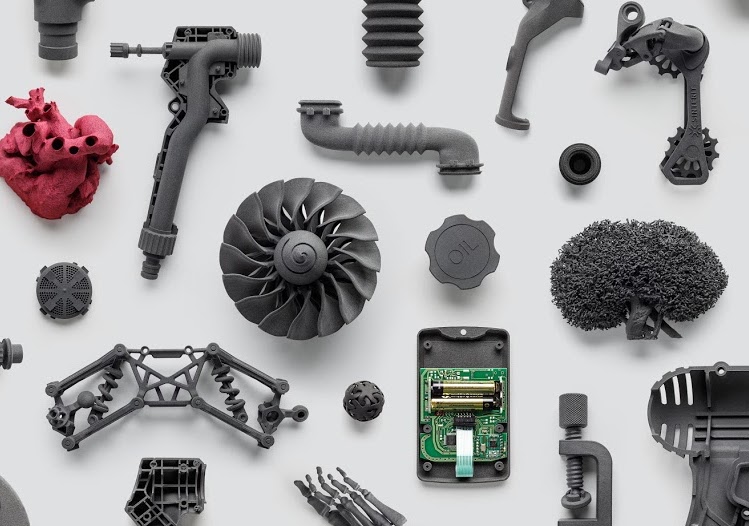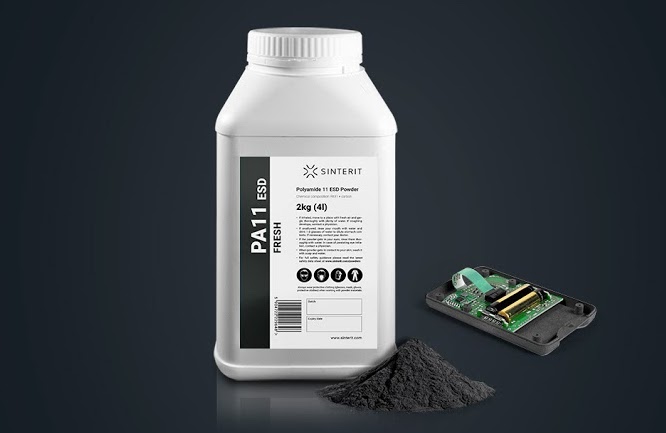Would-be SLS 3D printing adopters are increasingly seeking to deploy the technology within demanding prototyping applications. Still, they now face a tricky decision when it comes to choosing a new machine.
Not only do users need a 3D printer that meets their reliability demands, but one that supports a wide range of materials and allows them to create end-use standard mock-ups. According to Michal Grzymala-Moszczynski, R&D Manager of 3D printer manufacturer Sinterit, the company’s Lisa systems and broad powder portfolio are uniquely-suited to addressing these modeling needs.
“To produce an SLS 3D printer which can work with various materials, you sometimes need to develop hundreds of iterations,” explained Grzymala-Moszczynski. “A small change in one area may result in changing other parameters, which will finally affect the printing process. This is why our R&D department works simultaneously on mechanics, hardware, and software.”
“Having over a thousand working Lisa and Lisa PRO printers around the world proves that our idea works.”

Developing the Lisa 3D printer
When the longstanding patents that prevented the replication of SLS technologies expired in 2014, Sinterit was one of the first to integrate the process into a smaller machine, with its original Lisa 3D printer. However, the Lisa may have been much cheaper than its industrial predecessors, but its material compatibility initially proved slightly limited.
This was due to scaling down the traditionally-large CO2 lasers used within SLS to fit into a more compact device, without the need for redirection via a series of mirrors. Eventually, infrared laser diodes were used on the Lisa instead, which proved to be as accurate as before, but their shorter wavelengths couldn’t cope with regular white materials.
“When we developed our first SLS 3D printer, customers were constantly asking if they can use a white PA12 powder,” said Konrad Głowacki, Sinterit’s Chief Business Development Officer. “We now receive fewer questions about the white color, but the demand for a wide range of different types of materials is rising significantly.”
While conventional PA12 is traditionally dark grey, this also has its advantages, as it doesn’t change color over time, and it can effectively be darkened using small amounts of absorber. As a result, the polymer is still highly-popular with desktop SLS users, and it’s often used to 3D print detailed parts, including those with prototyping and end-use applications.
Similarly, Sinterit’s PA12 Smooth remains a key part of its material portfolio as it features a high tensile strength of 32 MPa, making it ideal for producing rugged structural elements. As an added benefit, during a recent internal cost analysis, the firm found that it had a low powder refresh rate (or the amount of new material that needs to be added for each new job).
In such evaluations, the lower the refresh rate, the better, and Sinterit’s PA12 Smooth achieved a rate of 26%. By comparison, many similar PA powders score between 50 and 70%, demonstrating the efficiency and cost savings it’s possible to achieve using the company’s established SLS powder.

Sinterit’s diversified PA portfolio
Since the original Lisa launch, Sinterit has continued to iterate its product lineup to meet client demand, especially within typical SLS prototyping applications. In addition to releasing its upgraded Lisa PRO 3D printer, it has also widened its material portfolio to offer its clients new polymers with expanded functionalities.
Sinterit’s nylon-based PA11 Onyx, for instance, is characterized by a high level of thermal, impact, and light resistance, making it ideal for 3D printing outdoor jigs, fixtures, and tools. The material is also used within prototyping applications, and popular prints include covers, housings, enclosures, and snap-fit designs.
The company recently launched a new electrostatic safe PA11 ESD material, which enables Lisa users to fabricate parts with static dissipative qualities. Such components can now be deployed within ESD-safe areas, opening up new electronics applications to Sinterit customers, including 3D printed casings, conductors, and fixtures.

Flexing with Sinterit’s TPUs
Elsewhere in its portfolio, Sinterit offers a range of TPUs and TPEs designed to provide clients with both the elasticity and robustness needed to create flexible parts. The firm’s Flexa Soft, for example, is pliable, but it also has a shore hardness of 45-58, meaning that it can be utilized within modeling and haptic applications.
Sinterit’s Flexa Bright TPU, meanwhile, is unique within its range because it can be dyed other colors, and it’s often used to fabricate medical parts such as replicas of the human anatomy that provide planning benefits for surgeons. Compared to Sinterit’s other TPUs, the elastomer also exhibits excellent mechanical properties, including an elongation at break at 318%, making it well-suited to producing both visual and functional prototypes.
Finally, the company also offers its Flexa Grey elastomer, which features an adjustable hardness level and high elasticity, providing it with wide-ranging textile applications. In the past, clients have leveraged the powder to create intricate designs that go far beyond prototyping, varying from living room upholstery to customized costumes for the Beijing Opera.
To stay up to date with the latest 3D printing news, don’t forget to subscribe to the 3D Printing Industry newsletter or follow us on Twitter or like our page on Facebook.
Are you looking for a job in the additive manufacturing industry? Visit 3D Printing Jobs for a selection of roles in the industry.
Featured image shows Benjamin Henkel, the owner of SLS3D, explaining the format of a 3D printed part to a client. Photo via Sinterit.


